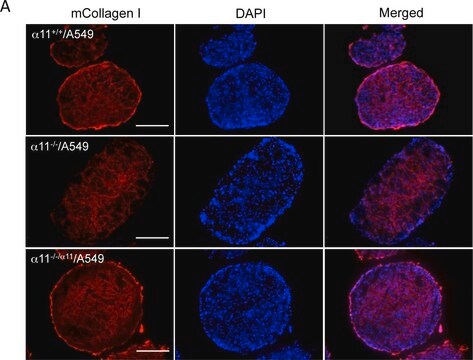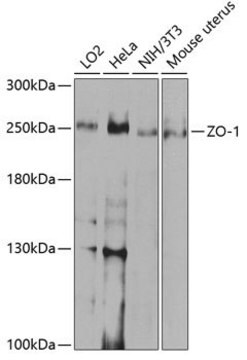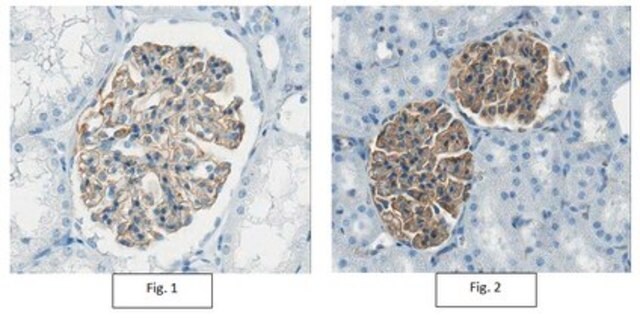MAB4369
Anti-SRF [Serum Response Factor] Antibody, clone 1E1
clone 1E1, from mouse
Synonim(y):
serum response factor (c-fos serum response element-binding transcription factor)
About This Item
WB
western blot: suitable
Polecane produkty
pochodzenie biologiczne
mouse
forma przeciwciała
purified antibody
rodzaj przeciwciała
primary antibodies
klon
1E1, monoclonal
reaktywność gatunkowa
mouse, human
metody
immunocytochemistry: suitable
western blot: suitable
moc wejściowa
sample type neural stem cell(s)
sample type mesenchymal stem cell(s)
izotyp
IgG1κ
numer dostępu UniProt
Warunki transportu
wet ice
docelowa modyfikacja potranslacyjna
unmodified
informacje o genach
human ... ELK3(2004)
Opis ogólny
Specyficzność
Immunogen
Zastosowanie
Stem Cell Research
Mesenchymal Stem Cells
Neural Stem Cells
Jakość
Western Blotting: Recommended working dilution is 0.5 µg/mL.
Opis wartości docelowych
Postać fizyczna
Przechowywanie i stabilność
Inne uwagi
Oświadczenie o zrzeczeniu się odpowiedzialności
Nie możesz znaleźć właściwego produktu?
Wypróbuj nasz Narzędzie selektora produktów.
Kod klasy składowania
12 - Non Combustible Liquids
Klasa zagrożenia wodnego (WGK)
WGK 1
Temperatura zapłonu (°F)
Not applicable
Temperatura zapłonu (°C)
Not applicable
Certyfikaty analizy (CoA)
Poszukaj Certyfikaty analizy (CoA), wpisując numer partii/serii produktów. Numery serii i partii można znaleźć na etykiecie produktu po słowach „seria” lub „partia”.
Masz już ten produkt?
Dokumenty związane z niedawno zakupionymi produktami zostały zamieszczone w Bibliotece dokumentów.
Nasz zespół naukowców ma doświadczenie we wszystkich obszarach badań, w tym w naukach przyrodniczych, materiałoznawstwie, syntezie chemicznej, chromatografii, analityce i wielu innych dziedzinach.
Skontaktuj się z zespołem ds. pomocy technicznej








